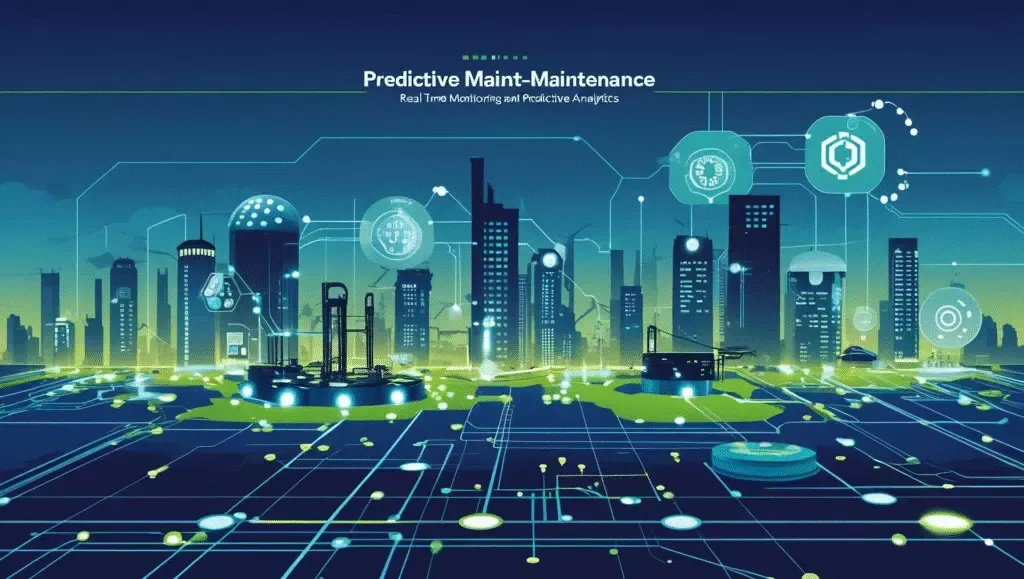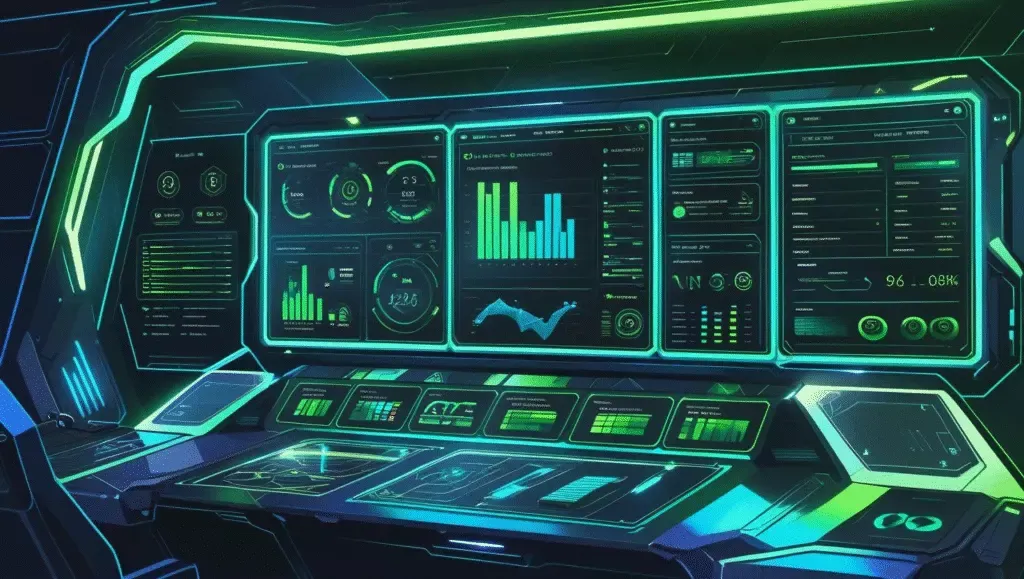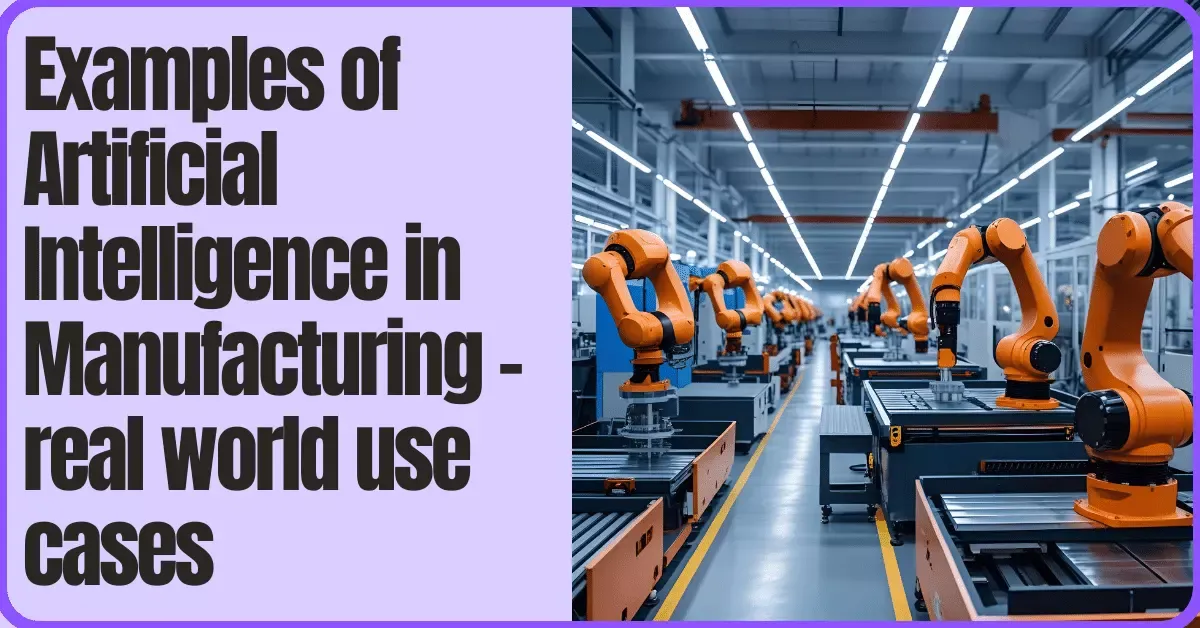- Artificial Intelligence in Manufacturing
- What is ai in manufacturing?
- Predictive maintenance – avoiding breakdowns before they happen
- Ai‑powered visual quality control
- Supply chain optimization and forecasting smarter
- Generative design and innovation unleashed
- Digital twins and virtual manufacturing
- Collaborative robots (cobots)
- Ai and robotics powering autonomous factories
- Energy management, sustainability and waste reduction
- Smart fixtures and adaptive machines
- Augmented reality (ar) for assembly and training
- Natural language support for maintenance teams
- Humanoid robots entering the floor
- how factories are stepping up now
- What does this all mean for you?
- Final thoughts
Artificial Intelligence in Manufacturing
Examples of Artificial Intelligence in Manufacturing- i’ve been diving into how ai is changing the factory world, and honestly, it’s wild. from predicting machine failures to smart robots helping on the line—if you’re in manufacturing or curious about tech, this is everything you need to know. i’ll walk you through key areas where ai is already making a difference. stick around, you won’t get bored i promise.
What is ai in manufacturing?
ai in manufacturing means using machine learning, computer vision, data analytics, and more to improve production. think predictive maintenance, smart robots, virtual models—tools that let factories run smarter, safer, faster.
ai isn’t about replacing people—it’s about helping them do better. here are the main ways it’s being used today.
Predictive maintenance – avoiding breakdowns before they happen
predictive maintenance is huge. ai systems monitor machines using sensors—things like temperature, vibration, oil levels. machine learning spots anomalies and tells maintenance teams to fix stuff before it breaks. no more waiting for breakdowns or doing maintenance on a schedule when you don’t need it.
big names like general electric now use predictive maintenance on industrial machines and jet engines, forecasting issues early so repairs happen before downtime. that saves time and money—and keeps production smooth. some companies report cutting downtime by nearly half and reducing costs by up to 30%.
siemens also uses similar systems in power plants and factories—real-time monitoring, heat and vibration analysis, and proactive alerts keep things running efficiently
bottom line? ai predicts issues early, and you save big on both downtime and maintenance costs.

Ai‑powered visual quality control
ever thought a camera system could replace 10 inspectors? ai makes it real. using high-resolution cameras and vision models, factories can inspect products on the line for defects. these systems catch tiny scratches, paint drips, assembly errors—and do it faster and more accurately than human eyes.
like at bmw, their ai inspection systems find microscopic defects in car parts, improving quality and cutting waste audi does something similar for paint inspection using robots with computer vision, cutting inspection time from minutes to seconds
in electronics, where components are so small, these ai systems are becoming essential. they flag issues instantly so faulty pieces are removed before shipping.
result: more consistent quality, fewer returns, happier customers—and less human error.

Supply chain optimization and forecasting smarter
ai in supply chain planning = fewer stockouts, less overstock, better logistics. it analyzes everything—past sales, market trends, weather—then predicts demand and optimizes inventory and shipping routes.
unilever uses ai for global demand forecasting, cutting overproduction and improving delivery reliability. similarly, amazon and other big logistics players optimize stock and routes using ai to reduce delivery times and errors
real example? a medical device manufacturer implemented ai-driven supply chain and cut inventory by over 20% while boosting fill rates—pretty solid wins
this means manufacturers can move faster, waste less, and stay lean—all thanks to ai.
Generative design and innovation unleashed
generative ai isn’t just for art. in manufacturing, it’s used to design parts—engineers input goals (like strength, weight, cost), and ai generates optimized variations.
gm uses generative design to build lighter, stronger components like seatbelt brackets—saving weight without compromising safety Intelegain. engineers can test hundreds of options virtually, speeding up design and prototyping cycles.
this kind of design was nearly impossible before—ai gives fast feedback and smarter choices before building anything physical.
Digital twins and virtual manufacturing
digital twins are virtual replicas of real machines or factories—they mirror live data and even send commands back to hardware.
digital twins are used for simulation, production monitoring, process planning, and predictive maintenance. they help spot bottlenecks or inefficiencies before they happen in the real world The Motley Fool
say you have a welding process—you simulate heat distribution on the part before doing the actual weld. that avoids errors and prevents wasted materials.
siemens and other industry players use digital twin tech to tweak operations and extend equipment life without stopping production.

Collaborative robots (cobots)
cobots are ai-powered robots that safely work alongside humans. they handle repetitive or heavy tasks while humans focus on decision-making and quality control.
ford and bmw use them for welding, gluing, heavy lifting tasks; they improve efficiency and reduce risk on the line.
even amazon warehouses use similar bots to store and pick items—boosting speed up to 75%
cobots are flexible—move them between stations easily, and they learn on-the-fly, making production smarter.
Ai and robotics powering autonomous factories
some factories now run with zero or minimal human presence. these so-called “dark factories” operate 24/7 with ai control.
xiao‑mi’s automated smartphone plant in china runs with minimal staff—they produce one phone per second using robots and ai for operations and quality control.fanuc’s lights-out factory has been operating autonomously for weeks at a time.
this tech isn’t everywhere yet, but it’s coming fast—not to replace humans completely, but to handle tasks that are dangerous or physically exhausting. ai systems monitor, adjust, and run without direct oversight.
Energy management, sustainability and waste reduction
ai isn’t just about robots—it can track energy use and cut waste. factories use sensor data to adjust lighting, HVAC, and machinery power use based on real-time demand.
this cuts both cost and carbon emissions. ai can also optimize raw material sourcing, batch size logic, and reduce scrap rates in production planning—making manufacturing greener and more efficient..
florasis—a beauty brand—runs a smart factory in china with ai managing raw materials to packaging and solar power use, boosting consistency and sustainability.
Smart fixtures and adaptive machines
smart fixtures are test fixtures with sensors and ai analytics built-in—they can test circuit boards, LED modules, etc., and give instant pass/fail or spec variance feedback Wikipedia.
adaptive machines detect the shape and size of each product and adjust conveyor paths or tool positions automatically. this is great for mixed-model production lines—different products move through only necessary stations, skipping the rest Wikipedia.
no more rigid lines—just flexible, efficient handling for every batch.
Augmented reality (ar) for assembly and training
ai-powered ar tools help workers assemble parts correctly—live instructions appear on gear or helmets, guiding position, torque, or part placement.
volkswagen and others use ar to overlay visual models during inspection or assembly, spotting misalignments in real time Wikipedia.
this speeds up training, reduces mistakes, and supports new workers who can see exactly what to do in real factories.
Natural language support for maintenance teams
imagine asking a machine “what’s wrong with motor 3?” and it shows charts or steps. that’s ai using natural language processing (nlp) to help technicians.
ge’s predix platform lets workers query maintenance logs using voice or text, get troubleshooting steps, and diagnose equipment faster—all without flipping through manuals.
makes tech help accessible to less experienced staff—cuts downtime faster.
Humanoid robots entering the floor
ai-driven humanoid robots like digit by agility robotics are starting to work in logistics/manufacturing. they move pallets, stack boxes, and fill labor gaps (especially in busy warehouses) Intelegaintime.com.
these robots are early stage, but they show how ai is expanding beyond fixed-line robots and into general-purpose helpers.
how factories are stepping up now
a recent manufacturing workshop showed how indian companies are adopting ai for predictive maintenance, real-time quality control, and integrating generative ai workflows The Times of India.
congress leaders in the u.s. are talking about reshoring manufacturing and investing in ai-powered smart factories to boost competitiveness and reduce dependency on other countries.
across industries, ai adoption isn’t just hype—it’s becoming the backbone of innovation and efficiency globally.
What does this all mean for you?
– less downtime, better product quality, and smarter production flow
– cost savings—real reductions in maintenance, waste, and inventory
– faster innovation—ai speeds up design, testing, and launch cycles
– safer workplaces—cobots, safety sensors, ar training, and more
– greener operations—ai helps reduce energy use and material waste
if you’re working in manufacturing—or thinking about bringing ai to your operation—this is the future. but it also means teams need training on data, ai tools, and adapting processes accordingly.
Final thoughts
ai in manufacturing isn’t science fiction anymore—it’s happening now. predictive maintenance, visual inspection, generative design, smart robots—all pieces of a connected, intelligent factory floor.
keeping tone real: factories don’t need to be perfect to start—just start smart. add sensors, test ai pilots, train teams, and grow from there. ai is a tool, not a takeover. it’s here to make work more efficient, not to replace you.
so when people talk about ai being the future of manufacturing, they’re not kidding. it’s already transforming everything—from the assembly line to logistics hubs and design labs.
got a factory or a startup curious about ai? drop a topic and i’ll walk you through more.


